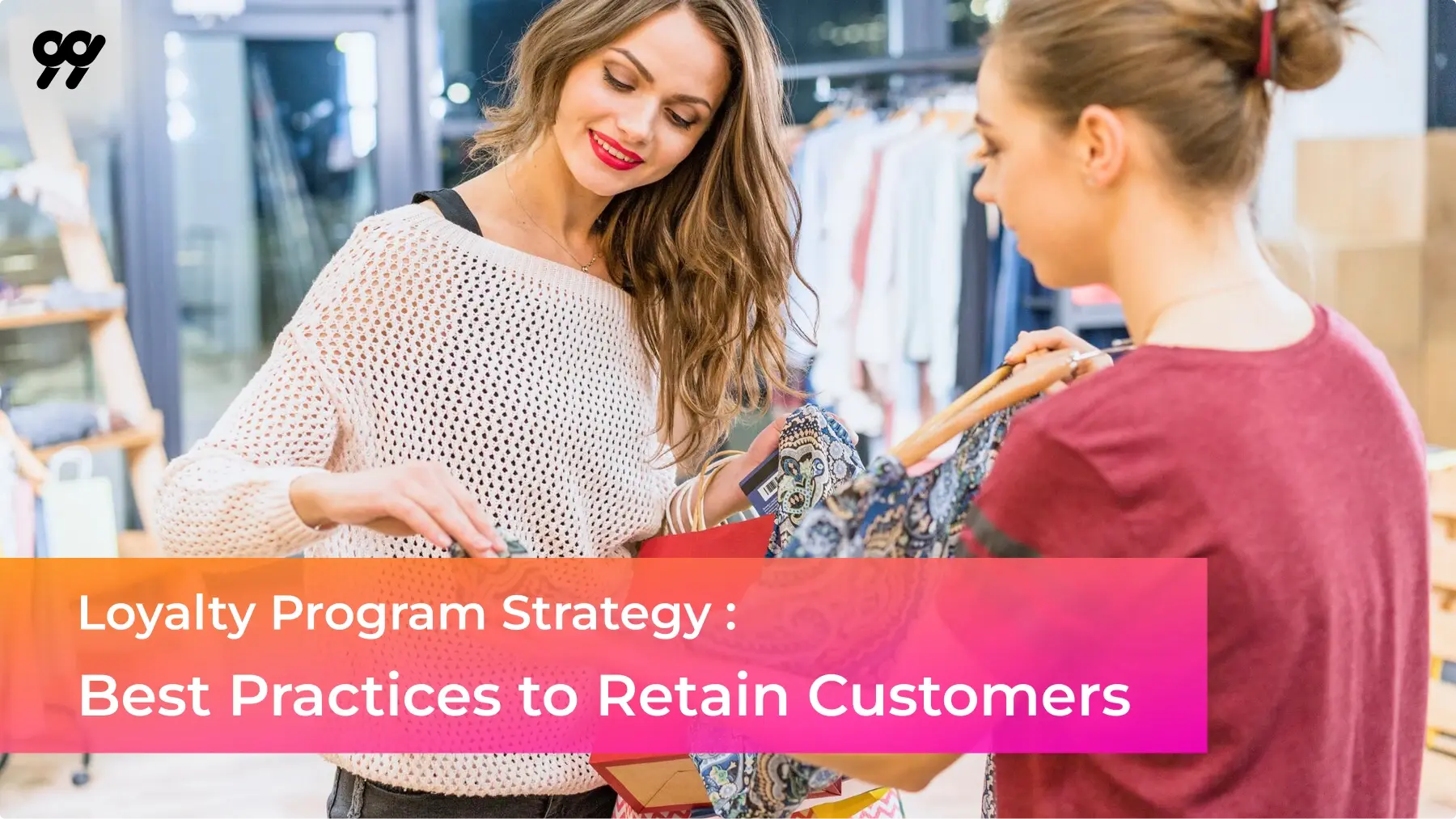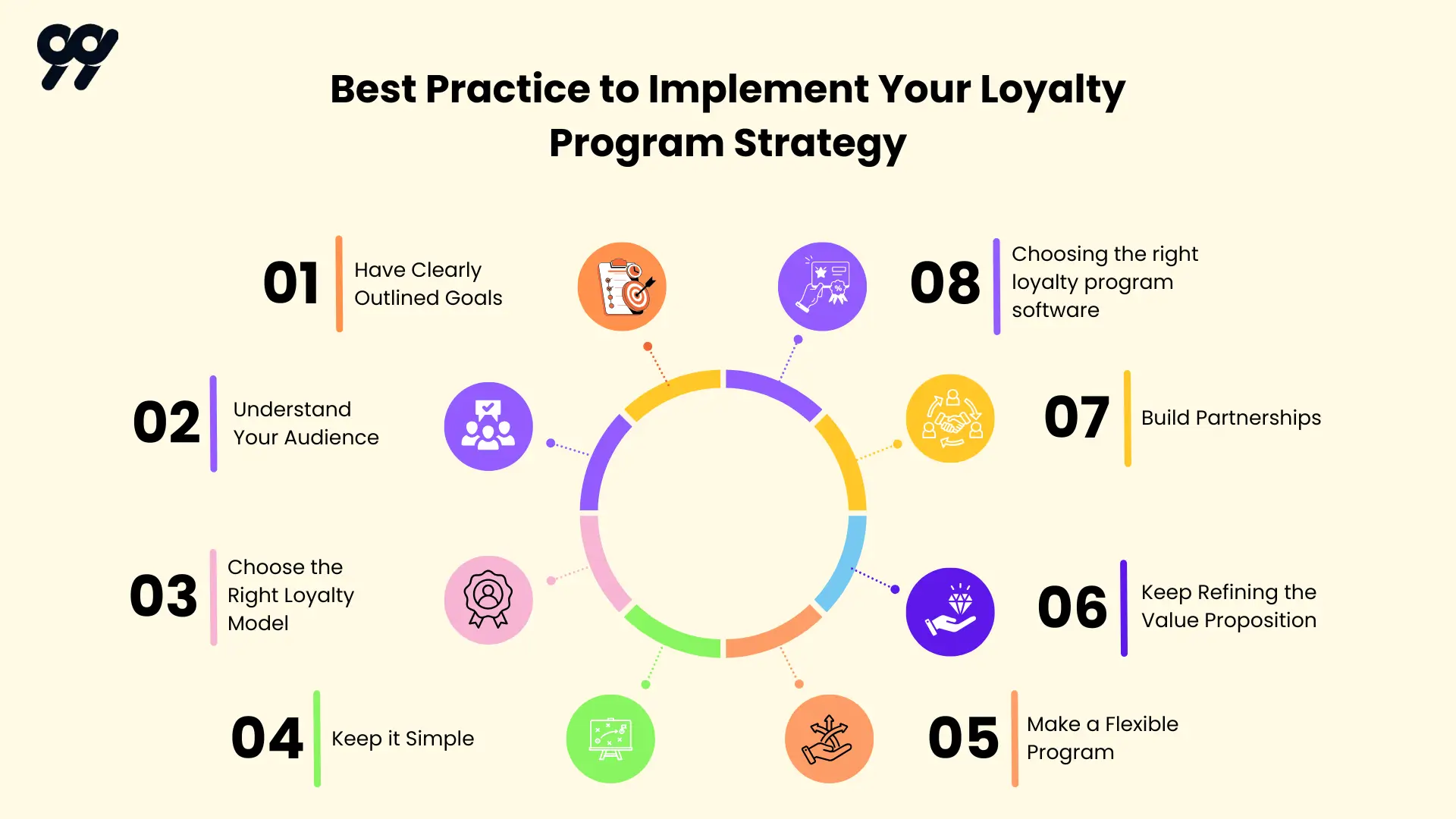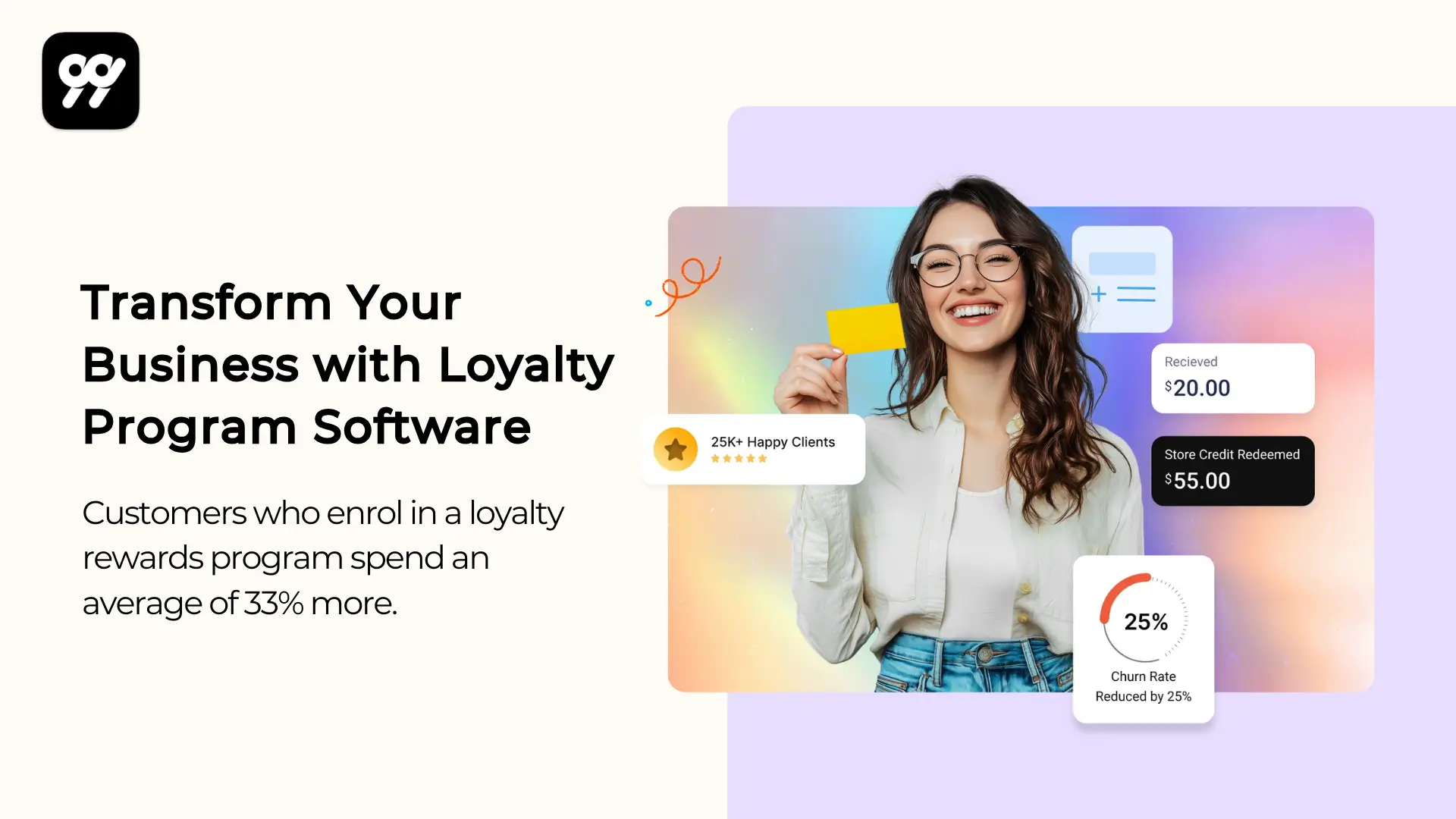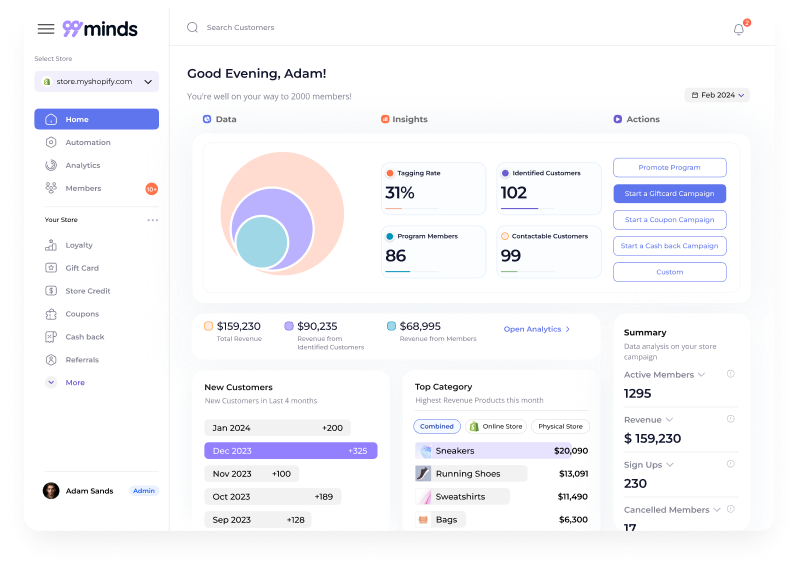Table of Contents:

Creating a loyalty program is a significant responsibility for any business focused on retaining customers. When thoughtfully structured, It can be an effective tool for increasing long-term engagement and recurring purchases. However, getting started can feel difficult because of the multiple options involved in developing the best rewards system.
A loyalty program without a solid loyalty program strategy is like a ship without a compass. You might be sailing, but you’re unlikely to reach your destination. The strategy is what gives your program direction, ensures long-term value, and aligns customer actions with your business goals.
According to Accenture, nearly 90% of companies now offer some form of loyalty program. It’s clear that keeping customers happy and engaged is more crucial than ever. But launching a program isn’t enough. The real game-changer? A smart, data-driven loyalty program strategy that delivers sustainable growth and customer engagement.
A loyalty program strategy is a well planned marketing strategy businesses use to build lasting customer relationships, increase brand loyalty, and foster long-term engagement by offering rewards and perks.
It combines customer insights, personalized experiences, and structured rewards to transform one-time customers into loyal customers. Each component, whether it’s a points system, tiered incentives, or exclusive experiences, is specifically designed to strengthen emotional connections and keep customers returning.
A truly effective loyalty program strategy incorporates:
The use of advanced analytics enables precise targeting, making each reward feel personal and relevant. It also ensures the strategy evolves with customer behavior, market trends, and emerging technologies.
Moreover, ethical considerations such as transparency and data privacy are prioritized. When customers trust your brand and see value in staying engaged, the loyalty strategy doesn’t just retain them, it turns them into your most vocal advocates.
Ultimately, a well-crafted loyalty program strategy is a flexible, data-driven approach that strengthens customer relationships, fuels brand growth, and creates a competitive edge in the marketplace.
A well-thought-out loyalty program strategy does more than encourage repeat purchases. Here’s why it’s essential for your retail or eCommerce business:
Customer retention is the backbone of a sustainable business. It’s significantly more cost-effective to retain an existing customer than acquire a new one. Loyalty programs are one of the best tools to keep customers coming back by offering continuous value and engagement.
To boost customer retention, a loyalty program should:
Customer Lifetime Value (CLV) refers to the total revenue a business can expect from a single customer account throughout their relationship. Loyalty programs enhance CLV by encouraging customers to spend more, more often. According to Harvard Business Review shows that loyalty program members spend 13-20% more than non-members. They also shop more frequently and are less likely to churn. Even small improvements here can create major revenue gains, repeat customers spend 67% more than new ones.
To maximize CLV:
Loyalty programs don’t just reward customers, they empower them to spread the word. When members feel valued, they’re more likely to recommend your brand to others. Referral bonuses, shareable rewards, and social incentives can turn your loyalty program into a growth engine.
Dropbox, for instance, skyrocketed its growth through a referral program that offered mutual benefits. You can apply similar tactics by:
Every interaction within a loyalty program tells a story. From purchase frequency to preferred products, the data collected gives you deeper insight into customer behavior. This enables smarter marketing and better decision-making.
Loyalty programs let you discover:
With this data, you can personalize offers, forecast demand, and fine-tune your pricing. Want to know their birthday or favorite product category? Offer a small bonus in exchange for that info.
Loyalty is emotional, not just transactional. A strong loyalty strategy strengthens the bond between customer and brand by facilitating ongoing, meaningful communication.
Regular updates like point reminders, new reward announcements, and member-exclusive offers create consistent touchpoints. These communications help reinforce brand identity and trust.
With integrations into tools like Klaviyo or Omnisend, you can:
Loyalty programs are not just a retention tool, they’re a full-funnel engagement strategy that drives revenue, insights, and emotional connection.
To build a loyalty program that actually works, you need more than good intentions. Here are proven strategies for loyalty program success:

The first step toward implementing a successful loyalty program strategy is to define clear objectives. Understanding why you want to start a loyalty program will help shape your approach. Are you aiming to increase customer retention, boost average order value, or encourage brand advocacy? Writing down your goals will give you clarity and a roadmap to follow. Setting measurable KPIs like customer lifetime value (CLV) and repeat purchase rate can help track the program’s effectiveness.
Once you have established your goals, it is crucial to understand your target audience. Conduct thorough market research to gather insights into your customers’ preferences, behaviors, and expectations. By segmenting your audience, you can create personalized loyalty experiences that resonate with different customer groups. Some questions to consider include:
Choosing the appropriate loyalty model is one of the most crucial decisions you’ll make when designing your program. The model should not only align with your business goals and brand identity but also resonate with your customers’ preferences and behaviors. Below are some of the most effective loyalty models to consider:
Points-based Program: This is the most common model where customers earn points with every purchase. These points can be redeemed for discounts, freebies, or other rewards. It works well for high-frequency, low-margin businesses such as grocery stores or coffee shops.
Tiered Program: In tiered loyalty programs, customers receive different levels of benefits based on their spending or engagement levels. As they move up tiers, the rewards become more exclusive and attractive. Tiered programs encourage customers to spend more to unlock better perks, making them ideal for businesses with high customer lifetime value.
Cashback Program: Customers earn a certain percentage of their purchase amount back, typically in the form of store credit. It’s straightforward and appeals to shoppers who prefer instant, tangible rewards. Cashback programs are particularly popular in sectors like fashion, electronics, and online marketplaces.
Paid or VIP Program: Customers pay an upfront fee to join a premium loyalty club. In return, they receive special perks such as free shipping, exclusive discounts, or early product access. These programs work best when the perceived value of the benefits far exceeds the membership cost, like Amazon Prime.
Gamified Program: Gamified programs incorporate game elements such as challenges, badges, leaderboards, and rewards for certain behaviors to make the loyalty experience more engaging and fun. They are great for brands targeting younger demographics or those looking to differentiate their loyalty experience from competitors.
The right model depends on your target audience, product type, purchase frequency, and long-term brand goals. You can also combine multiple models, for example, using a points system within a tiered framework or adding gamified elements to a VIP club to increase engagement and appeal to diverse customer segments.
A loyalty program that is overly complicated will discourage participation. Make it simple for customers to understand how to earn and redeem rewards. Clearly describe the program’s terms and conditions to ensure transparency at every stage. Use straightforward language in your communications, both online and offline. Simplicity not only encourages sign-ups but also increases long-term participation.
Flexibility is crucial for sustaining customer interest. Allow members to earn rewards through various activities, not just purchases. For example, offer points for writing reviews, sharing content on social media, or referring new customers. Additionally, ensure flexibility in redemption options, customers should be able to choose from a range of rewards based on their preferences.
Keep your loyalty program benefits appealing to your customers. Repeating the same rewards over the years can bore them and leave a negative impression. Instead, introduce fresh offers regularly to maintain their interest. When you offer attractive rewards, you build greater trust and loyalty toward your brand. Conduct regular surveys and use tracking tools to measure your loyalty program’s effectiveness.
Offer high-value rewards to keep your customers coming back. However, consistently meeting these expectations can become challenging over time. That’s when partnering with other businesses becomes a smart strategy. Partnering allows both parties to tap into each other’s customer base, creating a win-win situation. By offering partner rewards, you make your loyalty program more exciting and valuable for your customers.
To find the right partner, start by listing businesses that offer rewards your customers would appreciate. Avoid partnering with direct competitors. Clearly define the partnership’s terms and conditions to ensure transparency. Set a specific timeline for the collaboration and identify key performance indicators (KPIs) to measure the partnership’s effectiveness.
To execute your loyalty strategy effectively, you need a powerful and easy-to-use loyalty program software. A loyalty solution like 99minds offers a plug-and-play setup, enabling quick implementation, seamless integration, and full control over rewards, analytics, and compliance.

What to look for in loyalty program software:
A successful loyalty program isn’t just about points and perks; it’s about building emotional, long-term relationships with your customers. Businesses can create tailored loyalty program strategies that retain customers and turn them into brand advocates.
By leveraging real-time data, omnichannel engagement, and powerful automation tools, 99minds helps both retail and eCommerce brands design loyalty programs that drive sustainable growth. Whether you’re new to loyalty or looking to enhance an existing program, an innovative strategy backed by the right technology can give you a significant competitive edge.
